The Role of Data Leadership in Digital Transformation
Digital transformation has become a cornerstone of modern business, reshaping industries and redefining how organizations operate. It involves leveraging technology to enhance processes, improve customer experiences, and drive innovation. However, the success rate of such initiatives remains alarmingly low, with failure rates ranging from 70% to 90%. One critical factor behind this is the absence of effective data leadership. By placing data at the heart of your strategy, you can unlock its potential to guide decisions, foster innovation, and ensure a successful digital transformation. To achieve this, leaders must adopt a proactive and strategic approach to managing data as a core business asset.
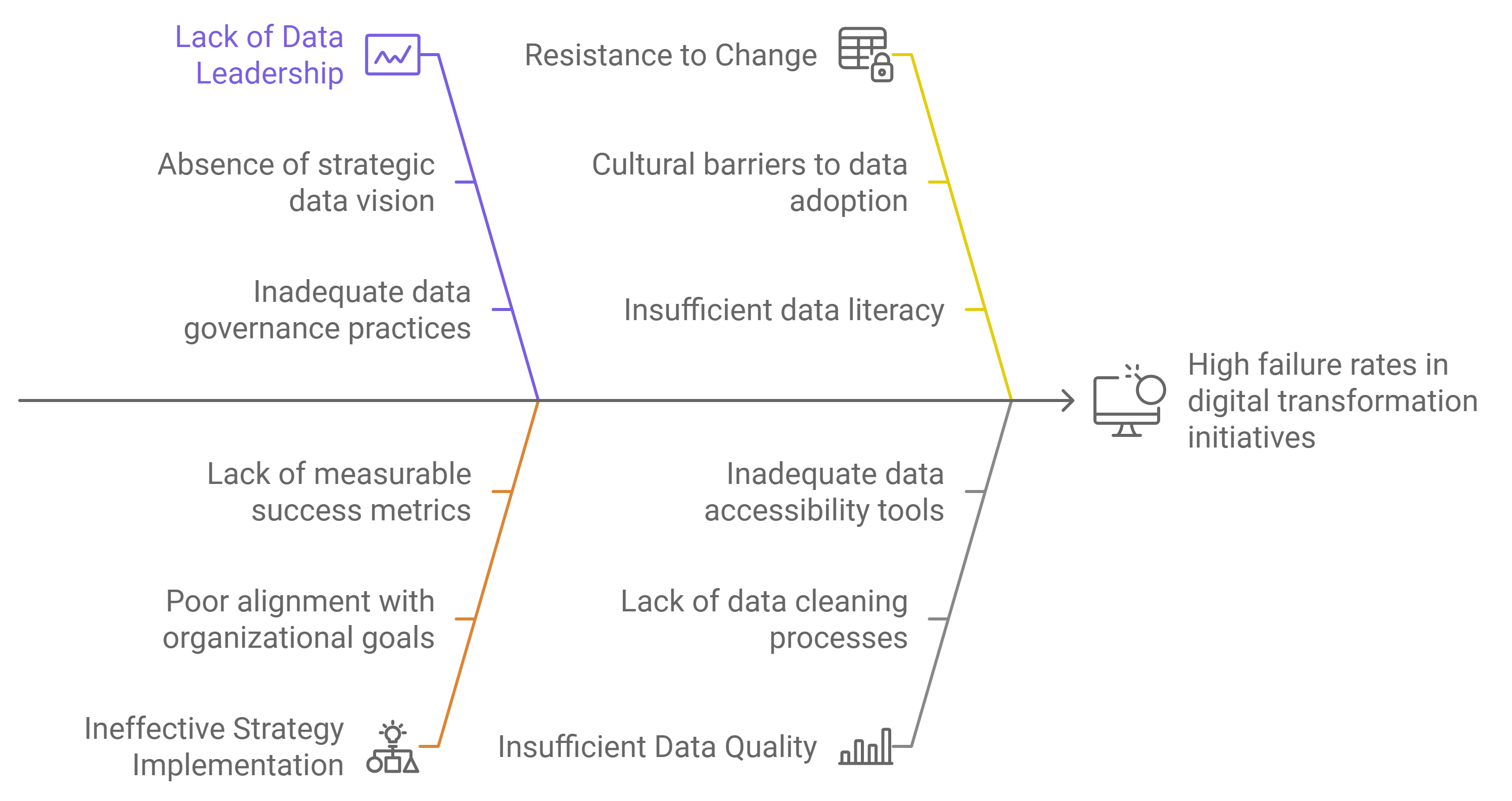
Key Takeaways
Data leadership is essential for successful digital transformation, enabling organizations to harness data as a strategic asset.
Establish a clear strategic vision for data initiatives that aligns with your organization's goals to drive measurable outcomes.
Promote data literacy across teams to empower employees to make informed, data-driven decisions and foster a culture of collaboration.
Implement robust data governance practices to ensure data quality, security, and compliance, which are critical for effective decision-making.
Leverage technology to enhance data accessibility, enabling teams to collaborate and innovate more effectively.
Encourage open communication and shared goals across departments to break down silos and enhance cross-functional collaboration.
Invest in leadership training and scalable data management tools to equip your organization for ongoing success in a data-driven world.
The Foundational Role of Data Leadership in Digital Transformation
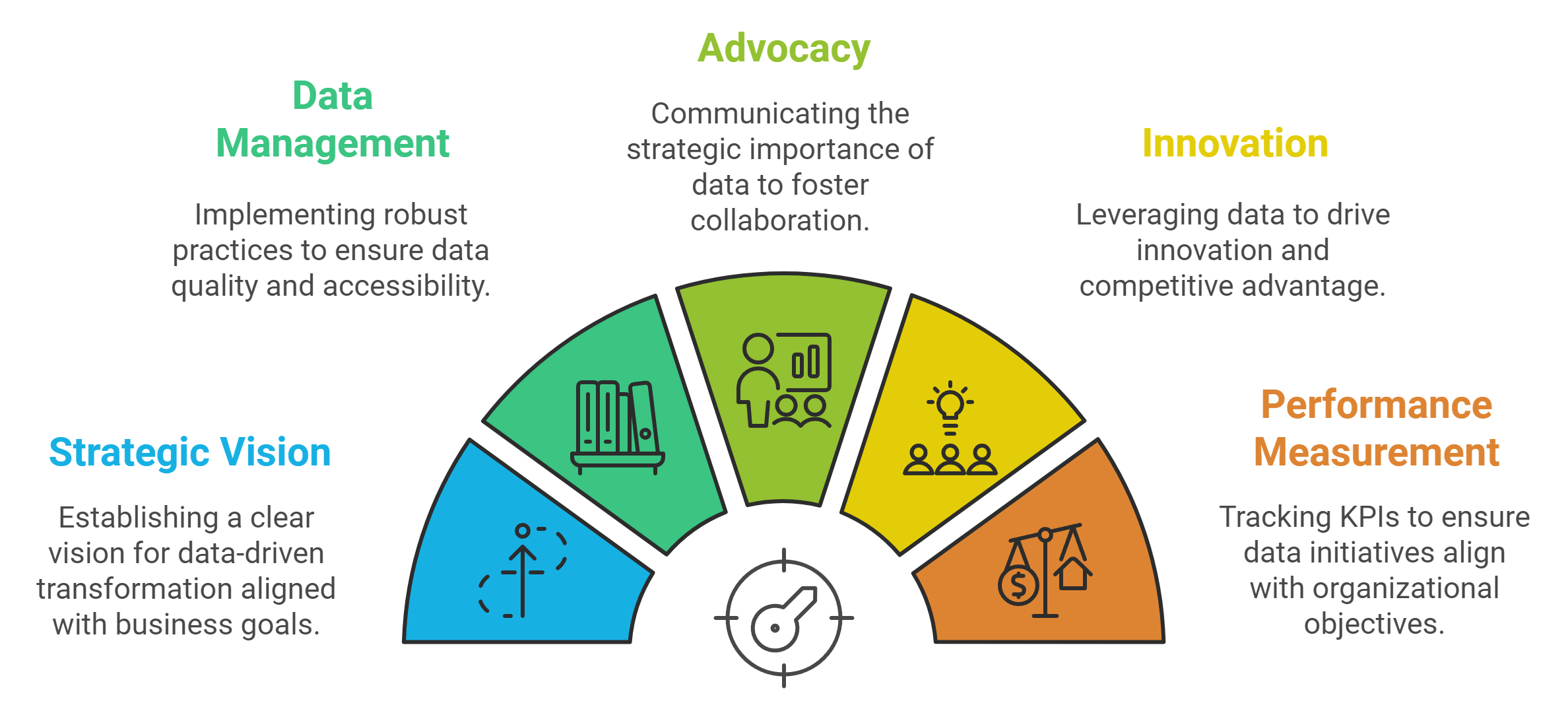
Defining Data Leadership and Its Importance
Data leadership serves as the cornerstone of any successful digital transformation. It involves guiding your organization to harness the power of data effectively, ensuring it becomes a strategic asset rather than just a technical resource. As a data leader, you play a pivotal role in shaping how data is collected, managed, and utilized to drive innovation and achieve business objectives.
In today’s fast-paced environment, data leadership is no longer optional. It empowers you to make informed decisions, predict market trends, and enhance customer experiences. By embracing data as a business discipline, you can transform your organization into a data-driven powerhouse. This shift not only improves operational efficiency but also positions your business to stay competitive in an ever-evolving market.
“Data is the linchpin of digital transformation, empowering organizations to make informed decisions, guide innovation, enhance customer experiences, and streamline business processes.”
Your ability to lead with data ensures that your organization remains agile and adaptable. Visionary leadership in this area fosters a culture where data analytics becomes central to decision-making, enabling faster innovation and better alignment with organizational goals.
The Role of Leadership in Shaping Data-Driven Digital Transformation Initiatives
The role of leadership in driving data-driven digital transformation initiatives cannot be overstated. As a leader, you set the tone for how data is perceived and utilized across your organization. Your vision and commitment to data-driven transformation inspire teams to adopt a proactive approach to data management and analytics.
To shape effective data-driven digital transformation initiatives, you must focus on creating scalable and flexible data platforms. These platforms enable seamless integration of data analytics into daily operations, ensuring that insights are accessible to all stakeholders. By doing so, you empower your teams to leverage data for innovation and strategic decision-making.
Leadership also involves advocating for the strategic importance of data. You must communicate its value clearly and consistently, ensuring that every team member understands how data contributes to achieving digital transformation goals. This advocacy helps break down silos and fosters collaboration, creating a unified approach to transformation.
Aligning Data Leadership with Organizational Goals
Aligning data leadership with organizational goals is essential for achieving a successful digital transformation. Your data strategy should directly support your company’s broader objectives, ensuring that data initiatives drive measurable outcomes. This alignment requires a clear understanding of your organization’s priorities and a commitment to integrating data analytics into every aspect of the business.
Start by establishing a strategic vision for data-driven transformation. This vision should outline how data will be used to achieve key business goals, such as improving customer experiences, driving innovation, or increasing operational efficiency. Communicate this vision across your organization to ensure alignment and buy-in from all stakeholders.
Next, focus on implementing robust data management practices. Reliable and clean data forms the foundation of any successful data strategy. By prioritizing data quality and accessibility, you enable your teams to make informed decisions that align with your organization’s goals. Additionally, leveraging advanced data analytics tools can help you uncover insights that drive innovation and competitive advantage.
Finally, measure the success of your data leadership efforts by tracking key performance indicators (KPIs). These metrics should reflect your organization’s digital transformation goals, providing a clear picture of how data initiatives contribute to overall success. Regularly reviewing these KPIs ensures that your data strategy remains aligned with your organizational objectives.
Setting a Vision for Data-Driven Transformation
Establishing a Strategic Data Vision
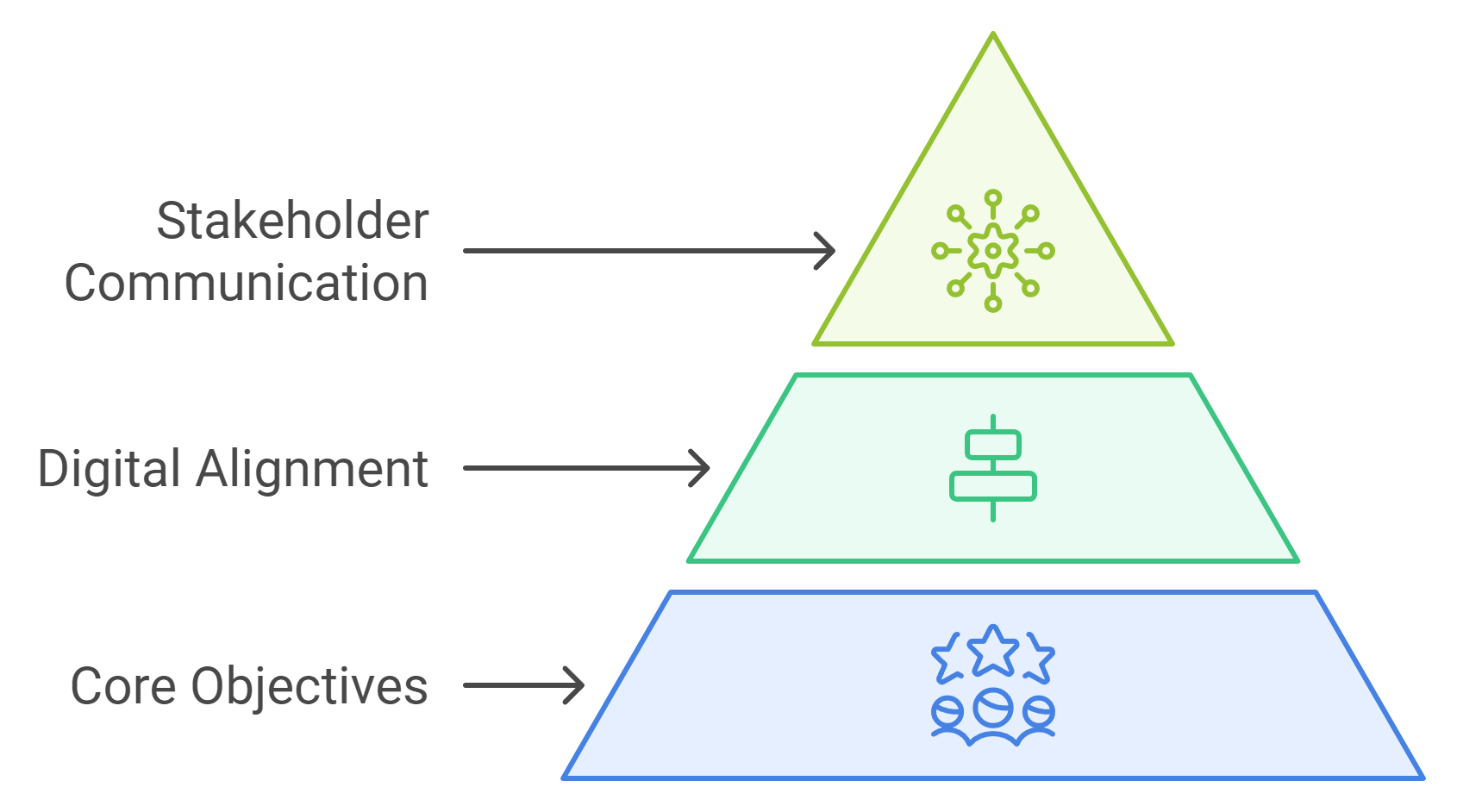
A strategic data vision serves as the foundation for any successful data-driven transformation. It provides a clear roadmap for how your organization will leverage data to achieve transformative outcomes. Without this vision, efforts often lack direction and fail to deliver meaningful results.
To establish a strategic data vision, start by identifying your organization's core objectives. Consider how data can support these goals. For instance, if your aim is to enhance customer experiences, focus on collecting and analyzing customer behavior data. If innovation is your priority, explore how data insights can inspire new products or services.
Next, ensure your vision aligns with your broader digital transformation strategy. This alignment guarantees that data initiatives contribute directly to your organization's success. According to recent findings, *90% of businesses are engaged in digital initiatives*, but only a fraction have fully realized their goals. A well-defined data vision can help bridge this gap.
Finally, communicate your vision clearly to all stakeholders. A shared understanding of the strategic role of data fosters collaboration and ensures everyone works toward the same objectives. By doing so, you create a unified approach to transformation that maximizes the value of your data assets.
Communicating the Value of Data Across the Organization
For a data-driven transformation to succeed, every team member must recognize the value of data. As a leader, you play a crucial role in fostering this understanding. When employees see data as a tool for achieving transformative outcomes, they become more engaged and proactive in using it.
Start by sharing success stories that highlight the impact of data. For example, showcase how data-driven decisions have improved efficiency or driven innovation within your organization. These examples make the benefits of data tangible and relatable.
Use simple language when explaining the importance of data. Avoid technical jargon that might alienate non-technical teams. Instead, focus on how data supports their daily tasks and contributes to the organization's overall success. For instance, explain how clean and accessible data can streamline workflows or improve customer satisfaction.
Encourage open discussions about data. Create opportunities for employees to ask questions and share their perspectives. This dialogue helps break down silos and promotes a culture where data is seen as a shared resource. According to surveys, organizations that prioritize change management and collaboration in their digital strategies often achieve better results. By fostering a collaborative environment, you set the stage for a successful transformation.
Creating Metrics to Measure Success in Digital Transformation
Measuring the success of your digital transformation requires clear and actionable metrics. These metrics provide insights into the effectiveness of your data initiatives and help you identify areas for improvement.
Begin by defining key performance indicators (KPIs) that align with your strategic data vision. For example, if your goal is to enhance customer experiences, track metrics like customer satisfaction scores or retention rates. If operational efficiency is a priority, monitor metrics such as process completion times or cost savings.

Regularly review these metrics to assess progress. Use the insights gained to refine your strategies and ensure they remain aligned with your organization's objectives. According to research, 35% of businesses have already achieved or are moving toward their digitalization goals. Tracking metrics allows you to join this growing group of successful organizations.
Share the results of your metrics with your team. Transparency fosters accountability and motivates employees to stay committed to the transformation journey. Celebrate milestones and acknowledge the contributions of individuals and teams. This recognition reinforces the importance of data-driven efforts and inspires continued engagement.
By establishing a strategic data vision, communicating the value of data, and creating meaningful metrics, you lay the groundwork for a successful data-driven transformation. These steps ensure that your organization not only embraces data but also uses it to achieve transformative outcomes.
Fostering a Data-Driven Culture
Creating a data-driven culture is essential for achieving meaningful transformation within your organization. It requires a deliberate effort to empower teams, break down barriers, and instill a digital mindset that values data as a core asset. By fostering this cultural shift, you enable your organization to thrive in an increasingly data-centric world.

Promoting Data Literacy Across Teams
Data literacy forms the foundation of a successful digital culture. It equips your teams with the skills and confidence to interpret, analyze, and apply data effectively in their roles. Without this knowledge, employees may struggle to make informed decisions or fully leverage the potential of your data assets.
To promote data literacy, start by defining what it means for your organization. Tailor your approach to the needs of different roles. For instance, executives may require high-level insights, while analysts need advanced technical skills. Establishing a baseline of data literacy ensures everyone has the tools to succeed.
Education plays a pivotal role in this process. Offer training sessions, workshops, or online courses to build data fluency across teams. Encourage curiosity by creating opportunities for employees to explore data and ask questions. As Piyanka Jain emphasizes, leaders must drive literacy throughout the organization and foster trust in data. This trust empowers individuals to embrace data-driven decision-making confidently.
Imagine a workplace where employees feel self-sufficient in their data skills. At Beck’s Hybrids, data literacy initiatives transformed how teams approached their work. Employees gained the ability to thrive independently, unlocking insights that drove business success. By investing in similar efforts, you can cultivate a culture where data becomes a shared language.
Breaking Down Silos to Enable Collaboration
Silos often hinder the flow of information and collaboration within organizations. These barriers prevent teams from sharing insights and leveraging data collectively. Breaking down silos is crucial for building a cohesive digital culture that thrives on collaboration.
Start by fostering open communication between departments. Encourage cross-functional meetings where teams can discuss data challenges and share solutions. Use collaborative tools and platforms to centralize data access, ensuring everyone works from the same source of truth. This approach eliminates redundancies and streamlines workflows.
Leadership plays a critical role in this process. Advocate for shared goals that align with your organization’s transformation objectives. When teams understand how their contributions fit into the bigger picture, they become more motivated to collaborate. Highlight success stories where collaboration led to innovative solutions or improved outcomes. These examples inspire others to adopt a similar mindset.
Breaking down silos also involves addressing cultural barriers. Promote a sense of unity by emphasizing the importance of teamwork and shared success. A cultural shift toward collaboration strengthens your organization’s ability to adapt and innovate in a rapidly changing environment.
Encouraging Data-Driven Decision-Making
Data-driven decision-making lies at the heart of a digital culture. It ensures that every choice, from strategic planning to daily operations, is informed by reliable insights. Encouraging this practice requires a commitment to embedding data into your organization’s decision-making processes.
Lead by example. Use data to guide your decisions and share the rationale behind them with your teams. This transparency demonstrates the value of data and inspires others to follow suit. Highlight instances where data-driven decisions led to measurable success, such as increased efficiency or improved customer satisfaction.
Provide your teams with the tools and resources they need to make data-driven decisions. Invest in user-friendly analytics platforms that simplify data access and visualization. Equip employees with the skills to interpret data accurately and apply it to their roles. As Gajownik’s story illustrates, nurturing data literacy enables employees to excel and contribute to a thriving digital culture.
Celebrate successes that result from data-driven decision-making. Recognize individuals and teams who use data effectively to achieve their goals. This recognition reinforces the importance of data in your organization and motivates others to adopt a similar approach.
By promoting data literacy, breaking down silos, and encouraging data-driven decision-making, you create a robust foundation for a data-driven culture. This cultural shift not only enhances your organization’s ability to adapt but also positions it for long-term success in the digital age.
Ensuring Data Quality and Accessibility
The Importance of Reliable and Clean Data
Reliable and clean data forms the backbone of any successful digital transformation. Without accurate and trustworthy data, your organization risks making decisions based on flawed insights. This can lead to inefficiencies, missed opportunities, and even reputational damage. Ensuring data quality is not just a technical task; it is a strategic priority that directly impacts your organization's performance.
High-quality data enables you to make informed decisions, improve customer satisfaction, and enhance operational efficiency. For example, organizations that prioritize data quality report better decision-making and regulatory compliance. By maintaining clean data, you reduce errors and inconsistencies, which helps streamline processes and improve outcomes.
To achieve reliable data, focus on regular audits and validation processes. These practices help identify inaccuracies and ensure that your data remains up-to-date. Additionally, encourage your teams to adopt a proactive approach to data management. When everyone understands the importance of data quality, it becomes easier to maintain consistency across the organization.
"Data governance ensures that the organization understands the importance of data quality and is capable of maintaining it."
By prioritizing clean and reliable data, you lay a strong foundation for your digital transformation efforts. This commitment not only supports better decision-making but also positions your organization for long-term success.
Implementing Effective Data Governance Practices
Effective data governance practices are essential for managing your organization's data assets. These practices establish clear guidelines for how data is collected, stored, and used. They also ensure that your data remains secure, compliant, and accessible to those who need it.
Data governance involves creating policies that define roles and responsibilities within your organization. For instance, designate data stewards who oversee data quality and ensure compliance with regulations. This structured approach helps you maintain control over your data while minimizing risks.
Organizations that implement robust data governance practices often experience improved operational efficiency and customer satisfaction. By aligning governance with your data management practices, you create a symbiotic relationship that enhances both quality and accessibility. This alignment also supports better risk management, as it ensures that your data complies with legal and regulatory requirements.
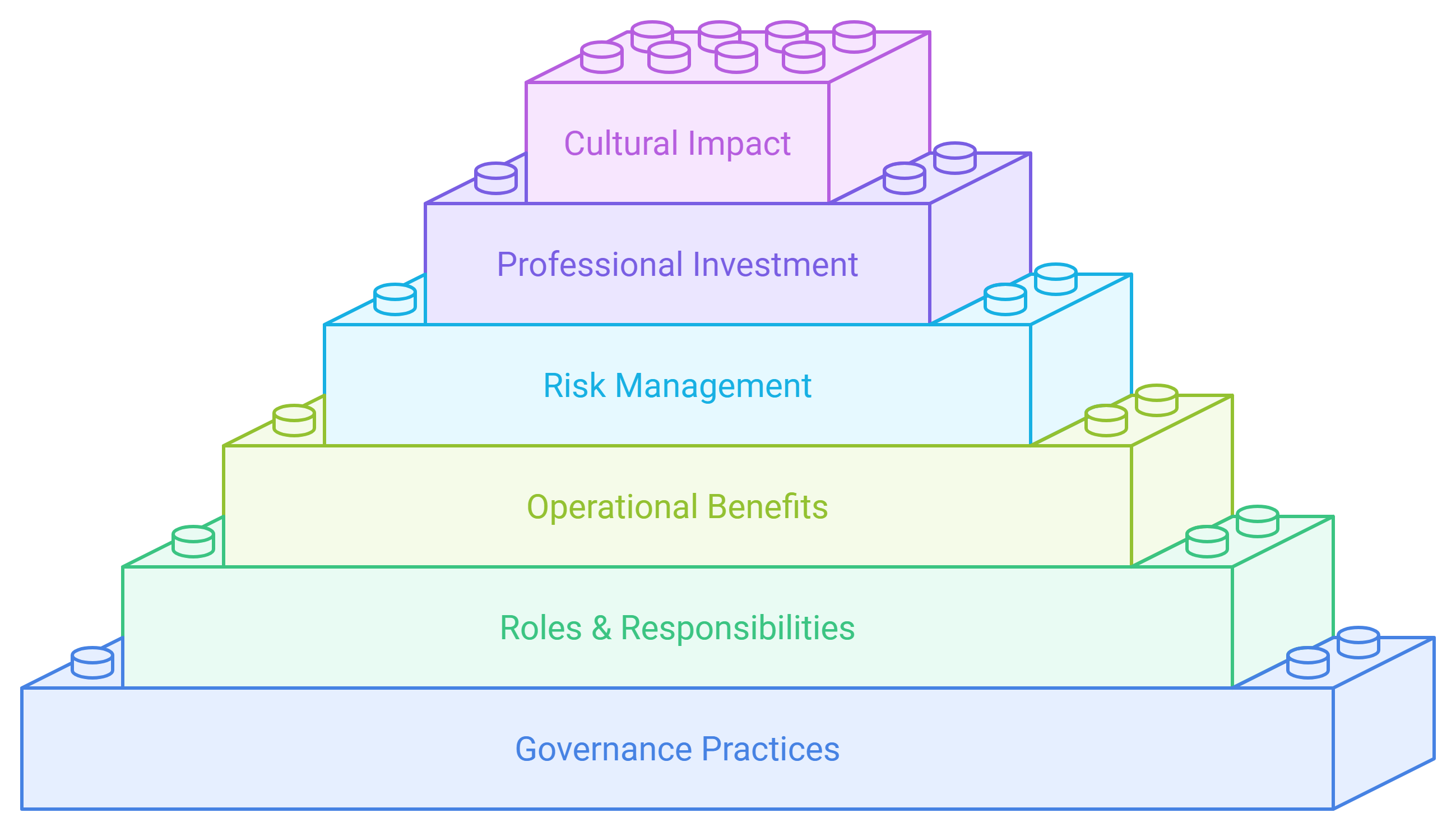
To strengthen your governance framework, invest in skilled data professionals. These individuals play a critical role in supporting data-informed decision-making and institutional success. Training your teams in governance principles ensures that everyone understands their role in maintaining data integrity.
By implementing effective data governance practices, you create a culture of accountability and trust. This culture not only supports your digital transformation goals but also empowers your organization to harness the full potential of its data assets.
Leveraging Technology to Enhance Data Accessibility
Technologies play a pivotal role in making data accessible across your organization. By leveraging advanced tools and platforms, you can ensure that your teams have the information they need to make informed decisions. Accessible data fosters collaboration, drives innovation, and supports your overall transformation efforts.
Start by adopting technologies that centralize your data. Cloud-based platforms, for example, allow you to store and access data from a single source of truth. This eliminates redundancies and ensures that everyone works with consistent information. Additionally, these platforms often include features like real-time analytics, which enable faster decision-making.
Invest in user-friendly tools that simplify data visualization and analysis. When your teams can easily interpret data, they are more likely to use it effectively. Technologies like dashboards and reporting tools provide intuitive interfaces that make data accessible to both technical and non-technical users.
"Organizations that are conscious of their data strategies report 54% better outcomes."
To further enhance accessibility, integrate technologies that support automation. Automated processes reduce manual effort and improve data accuracy. For example, automated data pipelines can streamline the flow of information, ensuring that your teams always have access to the latest insights.
By leveraging technology to enhance data accessibility, you empower your organization to thrive in a data-driven world. These tools not only support your digital transformation but also enable you to unlock new opportunities for growth and innovation.
Leveraging Data for Innovation and Data-Driven Customer Experiences
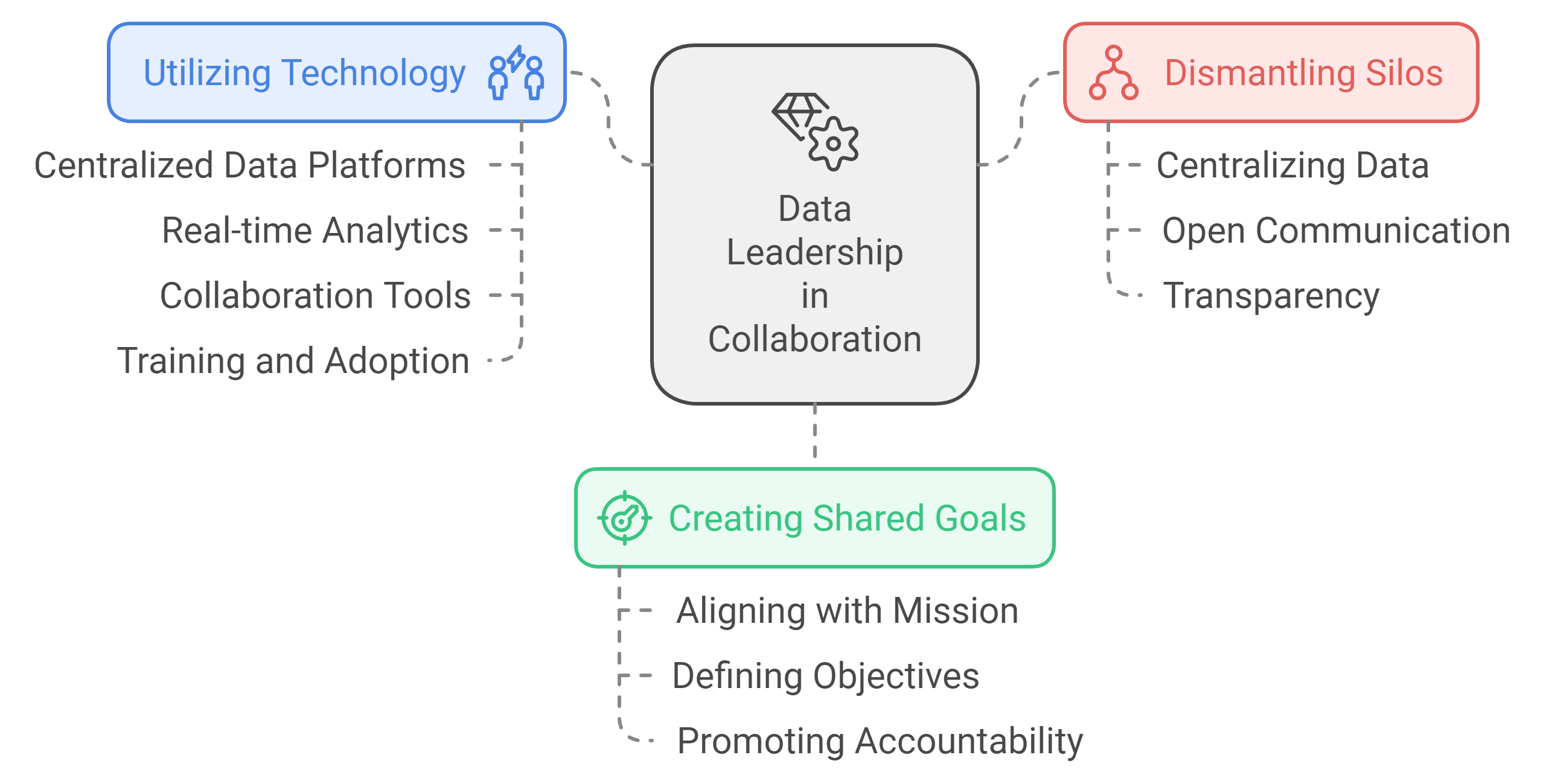
Using Data to Identify Growth Opportunities
Data serves as a powerful tool for uncovering new growth opportunities. By analyzing patterns, trends, and customer behaviors, you can identify untapped markets, refine your strategies, and stay ahead of competitors. Companies that harness data effectively often report increased market share and profitability. This advantage stems from their ability to make informed decisions based on actionable insights.
To begin, focus on collecting data from diverse sources. Customer feedback, market research, and operational metrics provide valuable information. For example, analyzing purchasing trends can reveal which products or services resonate most with your audience. This insight allows you to allocate resources more effectively and target areas with the highest potential for growth.
Next, use advanced analytics tools to process and interpret the data. These tools help you identify patterns that may not be immediately apparent. For instance, predictive analytics can forecast future trends, enabling you to adapt your strategies proactively. Businesses with enhanced big data capabilities often excel in this area, as they can quickly analyze large datasets to uncover opportunities.
Finally, prioritize collaboration across teams. Sharing insights ensures that everyone works toward common goals. Companies that embrace collaborative analytics often achieve faster product development and successful market launches. By fostering a culture of data-driven collaboration, you position your organization to seize growth opportunities and drive innovation.
Driving Innovation in Products and Services Through Data Insights
Innovation thrives when you leverage data to inform your decisions. By understanding customer needs and market demands, you can create products and services that stand out. Data-driven innovation not only enhances your offerings but also strengthens your competitive edge.
Start by analyzing customer preferences and feedback. This information provides a clear picture of what your audience values. For example, tracking user behavior on digital platforms can reveal features that customers find most useful. Use these insights to refine existing products or develop new ones that address unmet needs.
Incorporate data into every stage of the innovation process. From ideation to launch, data helps you make informed choices. For instance, A/B testing allows you to compare different product features and determine which resonates best with your audience. Companies that align their data strategies with business goals often report improved effectiveness and better outcomes.
Additionally, explore emerging technologies to enhance your innovation efforts. Artificial intelligence and machine learning can analyze vast amounts of data, uncovering trends and opportunities that might otherwise go unnoticed. Businesses leveraging these tools often experience improved operational efficiency and faster time-to-market for new products.
By using data to drive innovation, you create offerings that meet customer expectations and set your organization apart. This approach not only boosts customer satisfaction but also positions your business as a leader in its industry.
Enhancing Data-Driven Customer Experiences
Delivering exceptional customer experiences requires a customer-centric approach powered by data. By understanding your audience's preferences and behaviors, you can tailor interactions to meet their needs. This personalization fosters loyalty and drives long-term success.
Begin by collecting data at every touchpoint. Customer interactions, purchase histories, and feedback provide valuable insights. For example, analyzing browsing patterns on your website can help you identify areas for improvement. Use this information to create seamless and engaging experiences.
Leverage data to personalize your offerings. Tailored recommendations, targeted promotions, and customized communication resonate more with customers. Businesses that prioritize data-driven customer experiences often report higher engagement and satisfaction levels. This approach demonstrates your commitment to meeting individual needs.
Invest in technologies that enhance customer interactions. Chatbots, recommendation engines, and CRM systems streamline communication and improve service quality. These tools enable you to respond quickly to customer inquiries and provide relevant solutions. Companies that adopt a customer-centric approach often achieve better outcomes and increased revenue.
Finally, measure the impact of your efforts. Track metrics such as customer satisfaction scores, retention rates, and net promoter scores. These indicators provide a clear picture of how well your strategies are working. Regularly reviewing these metrics ensures that you continue to deliver exceptional experiences.
By enhancing data-driven customer experiences, you build stronger relationships with your audience and drive loyalty. This focus on personalization and engagement sets your organization apart in an increasingly competitive market.
Enabling Cross-Functional Collaboration Through Data Leadership
The Role of Data in Breaking Down Departmental Barriers
Data leadership plays a crucial role in dismantling the silos that often hinder collaboration within organizations. When departments operate in isolation, valuable insights remain trapped, limiting the potential for innovation and efficiency. As a leader, you can use data as a unifying force to bridge these gaps and foster a culture of collaboration.
Data serves as a common language that connects teams with diverse expertise. By centralizing data and making it accessible, you enable departments to share insights and work toward shared objectives. For example, marketing teams can collaborate with sales by analyzing customer behavior data, while operations can align with finance to optimize resource allocation. This interconnected approach ensures that every team contributes to the organization’s broader goals.
"Data collaboration is the process of sharing, managing, and working on data across different teams to achieve common goals in a coordinated manner."
Your leadership sets the tone for this cultural shift. By emphasizing the importance of data-driven collaboration, you inspire teams to break down barriers and embrace a unified approach. Encourage open communication and transparency to ensure that data flows freely across departments. This openness not only enhances decision-making but also builds trust among teams, creating a more cohesive organization.
Creating Shared Goals Across Teams
Shared goals are essential for fostering cross-functional collaboration. Without a clear understanding of how individual contributions align with organizational objectives, teams may struggle to work together effectively. As a data leader, you have the responsibility to establish and communicate these shared goals.
Start by aligning data initiatives with your organization’s mission and vision. Define specific, measurable objectives that resonate with all teams. For instance, if your goal is to improve customer satisfaction, outline how each department can contribute. Customer service might focus on response times, while product development could prioritize user feedback. These shared goals create a sense of purpose and direction.
Promote accountability by assigning roles and responsibilities. When every team member understands their part in achieving the goal, collaboration becomes more structured and efficient. Regularly review progress and celebrate milestones to maintain momentum. Recognizing achievements reinforces the value of teamwork and motivates employees to stay engaged.
"Effective data leadership relies on recognizing the dynamic roles within your team and aligning them with organizational goals."
By creating shared goals, you transform data from a departmental resource into a strategic asset that drives collective success. This alignment not only enhances collaboration but also ensures that your organization remains focused on its priorities.
Tools and Platforms to Facilitate Collaboration
Technology plays a pivotal role in enabling cross-functional collaboration. The right tools and platforms make it easier for teams to access, share, and analyze data, fostering a more connected and efficient organization. As a leader, you must invest in solutions that support your collaboration efforts.
Start by implementing centralized data platforms. Cloud-based systems, for example, allow teams to store and access data from a single source of truth. This eliminates redundancies and ensures consistency across departments. Real-time analytics tools further enhance collaboration by providing up-to-date insights that inform decision-making.
Collaboration tools like project management software and communication platforms also play a vital role. These tools streamline workflows and facilitate seamless interaction between teams. For instance, platforms like Slack or Microsoft Teams enable instant communication, while tools like Trello or Asana help track progress on shared projects.
"Organizations that leverage collaborative tools often experience improved efficiency and stronger alignment across teams."
Encourage your teams to adopt these technologies and provide training to ensure effective usage. Highlight the benefits of these tools, such as increased productivity and better decision-making. By equipping your organization with the right resources, you empower employees to work together more effectively.
Incorporating data leadership into your collaboration strategy transforms how your organization operates. By breaking down barriers, creating shared goals, and leveraging technology, you foster a culture of teamwork and innovation. This approach not only enhances efficiency but also positions your organization for long-term success.
Addressing Challenges in Data Leadership
Overcoming Resistance to Change in Data-Driven Initiatives
Resistance to change often emerges as one of the most significant barriers in data-driven initiatives. Employees may feel uncertain about new processes or fear that automation could replace their roles. As a leader, you must address these concerns head-on to foster a culture that embraces transformation.
Start by communicating the benefits of data-driven initiatives clearly. Explain how these changes will enhance efficiency, improve decision-making, and create opportunities for growth. Share real-world examples of organizations that successfully implemented similar strategies. For instance, companies that prioritized data management and analytics reported improved operational outcomes and higher employee satisfaction.
Engage your teams early in the process. Involve them in discussions about the goals and potential impacts of the transformation. When employees feel included, they are more likely to support the change. Provide training sessions to build confidence in using new tools and systems. Empower your teams with the skills they need to thrive in a data-centric environment.
Celebrate small wins to build momentum. Highlight instances where data-driven decisions led to positive results. Recognize the contributions of individuals and teams who embraced the change. This recognition reinforces the value of data initiatives and motivates others to follow suit.
“Change is never easy, but with clear communication, inclusive leadership, and consistent support, you can turn resistance into enthusiasm.”
By addressing resistance proactively, you create an environment where change becomes an opportunity rather than a challenge.
Managing Data Privacy and Security Concerns
Data privacy and security have become critical concerns in today’s digital landscape. High-profile incidents like the Facebook-Cambridge Analytica scandal and Equifax’s data breach serve as stark reminders of the consequences of neglecting these issues. As a data leader, you must prioritize ethical practices to protect your organization and its stakeholders.
Begin by establishing robust data governance policies. Define clear guidelines for how data is collected, stored, and used. Assign dedicated roles, such as data stewards, to oversee compliance and ensure accountability. These measures help safeguard sensitive information and build trust with your customers.
Transparency is key to managing privacy concerns. Inform stakeholders about how their data is being used and obtain explicit consent whenever necessary. For example, Google’s Project Nightingale faced backlash for collecting healthcare data without proper approval. This incident underscores the importance of maintaining transparency in all data practices.
Invest in advanced security technologies to protect your data assets. Encryption, multi-factor authentication, and regular audits can help prevent breaches. Train your teams on best practices for data security to minimize human error. A well-informed workforce is your first line of defense against potential threats.
“Balancing data utility with privacy is not just an ethical obligation—it’s a strategic necessity.”
By prioritizing privacy and security, you not only mitigate risks but also strengthen your organization’s reputation and customer loyalty.
Bridging Skill Gaps in Data Management and Analysis
The rapid evolution of technology has created a growing demand for skilled professionals in data management and analysis. However, many organizations struggle to find talent with the expertise needed to navigate this complex field. As a leader, you play a crucial role in bridging these skill gaps.
Start by assessing the current capabilities of your team. Identify areas where additional training or resources are needed. Offer targeted learning opportunities, such as workshops, online courses, or mentorship programs. These initiatives help your employees develop the skills required to manage and analyze data effectively.
Collaborate with educational institutions and industry experts to create tailored training programs. For example, partnerships with universities can provide access to cutting-edge research and specialized courses. These collaborations ensure that your team stays ahead of industry trends and technological advancements.
Encourage a culture of continuous learning. Provide incentives for employees who pursue certifications or attend conferences related to data management. Recognize their efforts and highlight how their new skills contribute to the organization’s success. This approach fosters a growth mindset and motivates others to enhance their expertise.
“Investing in your team’s skills is an investment in your organization’s future.”
By addressing skill gaps proactively, you empower your workforce to excel in data-driven roles. This capability not only supports your transformation goals but also positions your organization as a leader in the digital age.
Actionable Strategies for Effective Data Leadership
Investing in Leadership Training and Development
Strong data leadership begins with equipping leaders with the skills and knowledge to navigate the complexities of modern data ecosystems. Investing in leadership training ensures that you and your team can effectively manage data as a strategic asset. This approach not only enhances decision-making but also fosters a culture that values data-driven insights.
Start by identifying the specific skills required for effective data leadership. Focus on areas such as data governance, ethical data practices, and strategic alignment with organizational goals. Training programs tailored to these needs can help leaders understand how to integrate data into broader business strategies.
Workshops, online courses, and mentorship programs provide valuable opportunities for growth. For example, programs that emphasize frameworks like OKRs (Objectives and Key Results) can help align data initiatives with organizational objectives. These tools enable leaders to set measurable goals and track progress effectively.
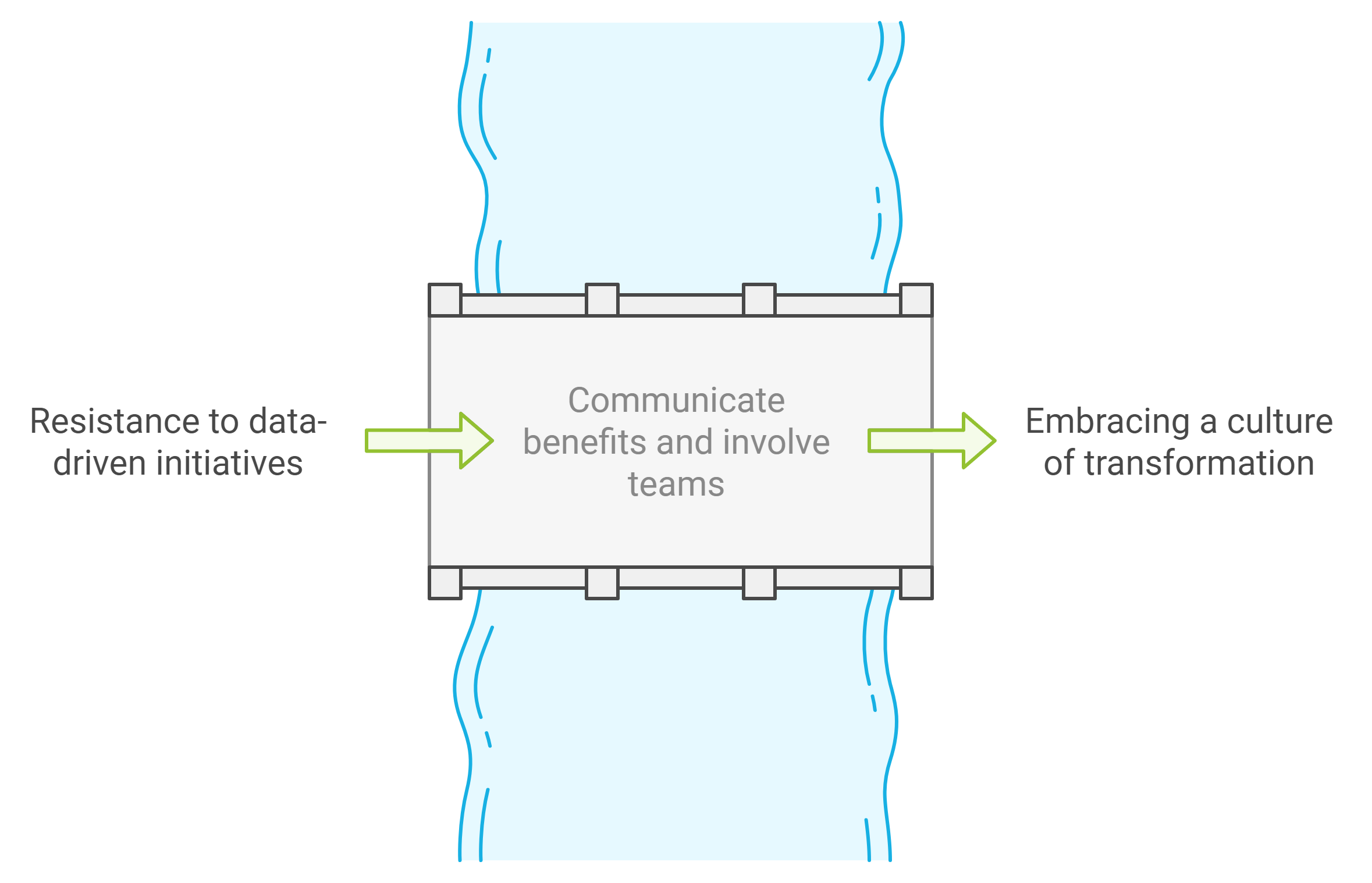
Encourage continuous learning within your organization. Leaders who stay updated on emerging trends, such as AI and machine learning, can better anticipate challenges and opportunities. By fostering a mindset of lifelong learning, you ensure that your leadership remains adaptable and forward-thinking.
“Data leaders shape the future of their organizations by envisioning how data can drive business value over the next three to five years.”
Investing in leadership development strengthens your ability to lead transformative data initiatives. This commitment positions your organization for long-term success in a data-driven world.
Adopting Scalable and Innovative Data Management Tools
Effective data management requires tools that can scale with your organization’s growth and adapt to evolving needs. Scalable and innovative tools empower you to handle large volumes of data efficiently while ensuring accessibility and reliability.
Begin by evaluating your current data infrastructure. Identify gaps that hinder your ability to collect, store, and analyze data effectively. Look for tools that centralize data management, such as cloud-based platforms. These solutions provide a single source of truth, enabling seamless collaboration across teams.
Automation plays a critical role in modern data management. Automated data pipelines reduce manual effort and improve accuracy. For instance, tools that automate data cleaning processes ensure that your data remains reliable and ready for analysis. This approach minimizes errors and enhances decision-making.
Invest in user-friendly analytics platforms that simplify data visualization. These tools make it easier for non-technical users to interpret data and apply insights to their roles. By democratizing access to data, you foster a culture where everyone can contribute to your organization’s transformation.
“Organizations that prioritize scalable data management tools often report improved efficiency and stronger alignment with their strategic goals.”
Adopting innovative tools not only streamlines your operations but also positions your organization to leverage data as a competitive advantage.
Partnering with Experts to Enhance Data Leadership Capabilities
Collaborating with experts can accelerate your journey toward effective data leadership. External partners bring specialized knowledge and fresh perspectives that complement your internal capabilities. Their expertise helps you navigate challenges and implement best practices in data management.
Start by identifying areas where external support can add value. For example, consultants with experience in data governance can help you establish robust policies and frameworks. Similarly, partnerships with technology providers give you access to cutting-edge tools and solutions.
Engage with educational institutions and industry organizations to stay ahead of emerging trends. Universities often offer research and training programs tailored to the needs of data leaders. These collaborations provide valuable insights into the latest advancements in data science and analytics.
Consider forming advisory boards that include data experts from diverse industries. These boards offer strategic guidance and help you align your data initiatives with broader business objectives. Their input ensures that your organization remains competitive in an ever-changing landscape.
“Partnering with experts allows you to enhance your data leadership capabilities and drive meaningful transformation within your organization.”
By leveraging external expertise, you strengthen your ability to lead with data and achieve your digital transformation goals.
Data leadership stands as the cornerstone of a successful digital transformation. By fostering a robust digital culture, you empower your organization to adapt, innovate, and thrive in an ever-evolving landscape. Aligning data strategies with organizational goals ensures that every decision contributes to measurable success.
Take actionable steps today to embrace data leadership. Promote ethical practices, build trust, and drive meaningful change. Let data guide your journey toward innovation and growth. Lead with purpose, and inspire your teams to see data not just as a tool but as a transformative force for the future.
See Also
How Data Leadership Influences Organizational Decision Processes
Navigating Obstacles in Effective Data Leadership
Harnessing Data Leadership for Contemporary Business Growth
Transitioning from Data Management to Data Leadership Mastery
